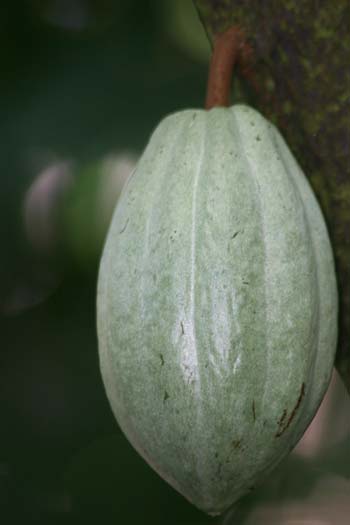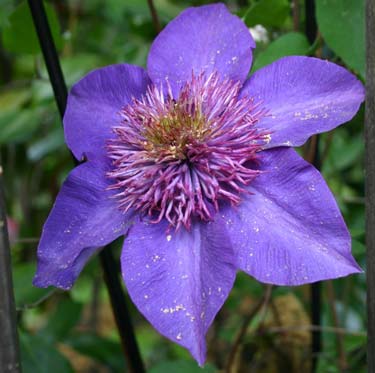Musings

Yellow stargrass (Hypoxis hirsuta) at trailside, yesterday.
Random bits from the web:
Whoever desires to have their hair grow a lot and to make the head smell very good, should get used to combing the hair, with vulture grease, in the sun. (Find more hygenic comments here.)
Here’s an innovative and well-crafted website about an important 8000-10,000 year-old archaeological site in south-central Turkey named Çatalhöyük. The buildings on this site are similar to the Puebloan housing blocks in southwestern North America.
Archaeologists consider it unethical and unprofessional to buy and sell artifacts, much as physicians would not buy and sell livers or kidneys. But what is subsistence looting? In poorer regions where finding an ancient pot or statue would mean immediate government control, the peasant farmer who unearths such an artifact might instead quickly sell it to a dealer to bring money so an impoverished family will to be able to eat. (Read more here.)
It is clear that 90% of humanity have subsisted on a 90% vegetarian diet. Modern carnivorous men and women are the exception not the rule. (Read more here.)
Archaeology is largely a field subject and, as part of your course, you can expect to be working out of doors for weeks on end, often away from proper housing and facilities. (Read on here.)
Posted at 3:47 PM |
Comments Off on Vulture grease?

Today, we voyaged to north Georgia to hike with our wonderful neighbors. In the woods, we saw huge rainbow trout circling in unfished pools, freshly leafed out poison ivy, some one-inch salamander youngsters, and the tails of a pair of disappearing deer, but the most blahgable was the tenderly maintained graves at the cemetery attached to the churchyard where we ate our picnic lunch.
At this grave, note Santa driving a motorcar in the front left, hopefully taking care to avoid the immense praying hands in front of his bumper. I have no idea what the take-away message is of the deer with the nice rack in the back near the gravestone.
Is this a new pattern of on-going ritualization, adopted since locals started to imitate the Latin habit of erecting small commemorative monuments along the roadside where loved ones have died in car accidents? Or, is this a long-standing tradition I’ve just never noticed before?
Posted at 10:22 PM |
Comments Off on Cemetery art


The Majestic is on Ponce, in Atlanta.
Finally, Westerners are recognizing a fifth taste: umami. That’s the Japanese name for it, but it’s in the vocabulary across Asia. And, as I understand it, the Chinese consider what we’d call pungent another taste, although the fifth taste in ancient China was spicy-hot. For a long time, we Westerners only referenced sweet and sour, bitter, and salty.
Umami is tough to define in English, but you encounter it in meat stocks, red wine, and ketchup. The Wikipedia says umami is highest in foods with “free glutamates,” which include many fermented foods as well as walnuts, broccoli, and tomatoes.
I wonder if experts consider tamale masa as having much umami? Seems to me it might….
Posted at 11:41 AM |
Comments Off on Umami

Cacao (Theobroma cacao) was both “money” and food.
Despite yesterday’s reading list, today I was seduced by the tamale.
Precolumbian people respected maize and treated it with elaborate etiquette. Women carefully blew on kernels before placing them in the cooking pot to give them courage for confronting the fire. Once every eight years they “rested” the corn, cooking it plainly, “for we brought much torment to it—we ate it, we put chili on it, we salted it…we added lime. And we tired it to death, so we revived it.”
That’s from Jeffrey M. Pilcher in Que Vivan los Tamales! Food and the Making of Mexican Identity (1998, pg. 17).
Much of the book is about how the national ruling elite of Mexico has historically followed a European lead and sought to distance themselves and the dominant political discourse from the peasantry (not a rare thing in 19th and 20th century nationalism). Pilcher focuses on how this was done by attempts to replace maize by wheat in the national diet (very unsuccessful with most of the population, the subsistence farmers). He really doesn’t amplify how this was also accomplished in language (Spanish over indigenous languages), dress (replacement of traditional or Colonial garments), and in the market economy (widespread changes too complicated to detail here). As a historian, I thought he might….
Now, however, these most Mexican of prehispanic traditions are touted in tourism advertising, and considered the biggest selling point both to foreigners and to Mexicans.
Me, I’m craving a trip out Buford Highway to find some genuine tamales handmade by a tamale lady, which are superb reheated in the microwave.
Posted at 10:22 PM |
Comments Off on Tamale time

In progress, and of note:
• Albert-László Barabási, 2002, Linked: How Everything Is Connected to Everything Else and What It Means for Business, Science, and Everyday Life (thank you for the suggestion, JFC). Excellent, although I admit I’m only 100 pages into it. As Barabási says, “This book has a simple aim: to get you to think networks.”
• Boris Akunin, modern Russian mystery writer (yes, it’s a pen name), whose fourth English translated novel has just appeared (but I have only the first three, courtesy of the county library). I’ve just started on The Winter Queen, and, once I get beyond it’s inherent Russian-ness (the ponderous part), fascination kicks in!
’Nuff about me; whatchu reading?
Posted at 9:53 PM |
Comments Off on Current reading

Bob Page and John Cocuzzi at facing keyboards on the stage at our own Blind Willies last night—incomparable! They tossed songs back and forth, playing past their first break ’cause they were having such a good time!
Willies was the best place to be in ATL on Mon night, no question!
PS You may remember hearing Bob if you came to our wedding reception; what a terrific wedding present….
Posted at 10:22 PM |
Comments Off on Two pianos

Fall pond awaiting freeze-over, Ingham County, Michigan.
Out there in the lovely land of FREE!!! information on the internet, our friend Steve, in town from Canton OH last week for a conference, mentioned The Red Hot Jazz Archive, a site for information on pre-1930s jazz—including musician bios and even music clips!
Right now I’m listening to Clarence Williams’ “Michigan Water Blues” (of course that name would attract my eye!)….
When I first met her, she had no hair on her head…
Everybody has a rough day now and then, but some are worse than others!
Posted at 9:43 AM |
Comments Off on Jazz notes

Remember when you had to have muscles in your fingers to type well? (TY JCB for this image!)
Random facts of note:
- The Bravos got rained out—two games!—this weekend.
- Dinner tonight was crabcakes (not carbcakes; watch those typos!), recipe posted on this site.
- I didn’t get outdoors enough today; the weather’s superb and I didn’t get farther than the tomato plants that are already threatening to be leggy and skip blooming ’cause the backyard’s so shaded.
- Walter Mosely really can write!
- Google Earth (download it; it’s free!) is a wonderful program, incredibly illuminating!
Disclaimer: this list in no way competes with Anne’s periodic listing of “things attached to the ‘fridge.”
Posted at 9:10 PM |
Comments Off on To-do list?

I am alone with my sheep. But they are not alone with me.
—opening lines to a novel discussed in the Brit-com that Judi Dench plays in, As Time Goes By. FYI.
PS. This statue is in Piedmont Park, and commemorates something about the Olympics when they were here in Atlanta….
Posted at 8:22 PM |
Comments Off on Cobweb mouth

Bigfoot was here! And now Bigfoot is gone!
Sad morning. After three raucous, fun-filled days together, we waved goodbye to Robert and Mary Jo, and their home, Bigfoot, as they headed north to Chicago. Not only will I miss all the laughing good-times, but also the wrinkle that Robert added to end our “heated” midday walks—a stop at George’s, on Highland just north of Virginia (closest to a link that I could find), to sip a cold brew and tall glass of H-two-oh in the quiet darkness of the back of the bar….
* Great image, no?—I borrow today’s “headline” from Bob Hope in Road to Utopia (1946), although I’m sure that line didn’t originate the term. What did he mean? Oh, a squeezebox, an accordion!
Posted at 11:47 AM |
Comments Off on Stomach Steinway*










